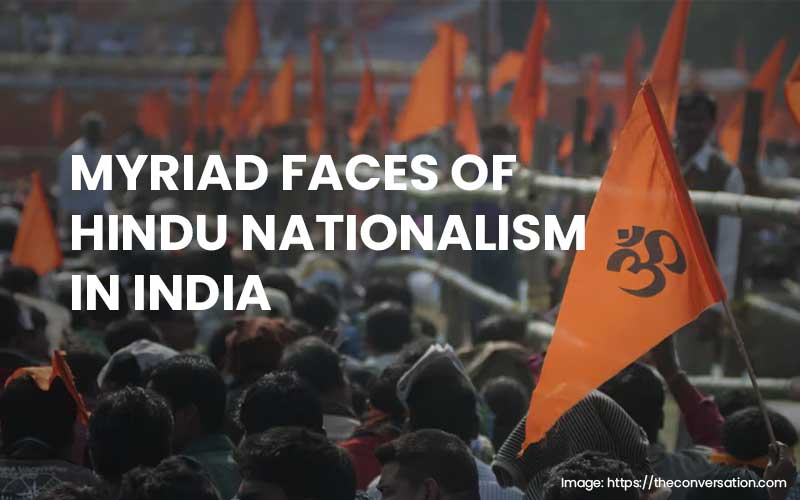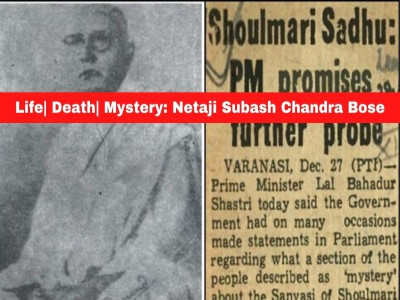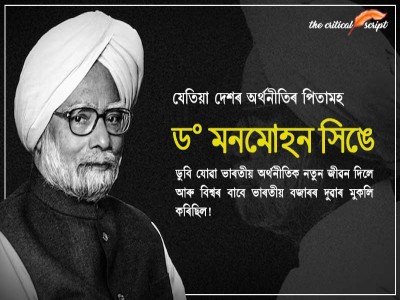
Myriad faces of Hindu nationalism in India
What is Nationalism?
Nationalism as defined by Merriam-Webster
dictionary means “loyalty and devotion to a nation. Especially: a sense of
national consciousness exalting one nation above all others and placing primary
emphasis on the promotion of its culture and interests as opposed to those of
other nations or supranational groups.
Encyclopaedia Britannica defines Nationalism as an ideology based on the premise that the individual’s loyalty and devotion to the nation-state surpass other individual or group interests.
Difference between Nationalism and
Patriotism
Nationalism and patriotism are two sides of the
same coin but there is a thin line demarcating both ideologies.
Patriotism is an attachment to a homeland. The love
and adoration for the place where an individual is born and brought up, and the
nation that place belongs to. These attachments can be related to ethnic,
cultural, political, or historical. Patriotism is also being proud of a
country's virtues but with an eagerness and readiness to correct its
deficiencies to be better. Patriotism acknowledges the patriotism of citizens
of other countries and respects their virtues.
An excess of patriotism in the defense of a nation
is called chauvinism or jingoism.
The difference between patriotism and nationalism
is simple - a patriot loves his country and is proud of it for what it does
whereas a nationalist loves his country and is proud of his country NO MATTER
WHAT IT DOES.
Quite clearly, patriotism nurtures a feeling of 'responsibility' in the citizens while nationalism breeds blind arrogance or ignorance, and it often leads to conflict.
Nationalism in India (a brief historical
timeline)
Indian nationalism developed as a concept during
the Indian independence movement fought against the colonial British Raj.
In India, the growth of modern nationalism is
connected to the anti-colonial movement. Due to colonialism, many different
groups shared bonds together, which were forged by the Congress under Mahatma
Gandhi.
In January 1915, Mahatma Gandhi returned to India
from South Africa and started the movement Satyagraha. Satyagraha emphasised
the power of truth and the need to search for truth. According to Mahatma
Gandhi, people can win a battle without non-violence which will unite all
Indians.
In 1919, Mahatma Gandhi launched a nationwide
satyagraha against the proposed Rowlatt Act. The Act gives the government
enormous powers to repress political activities and allowed the detention of
political prisoners without trial for two years.
According to Mahatma Gandhi, British rule was
established in India with the cooperation of Indians, and hence if we have to
achieve complete swarajya he proposed the non-cooperation movement. It should
begin with the surrender of titles that the government awarded, and a boycott
of civil services, army, police, courts and legislative councils, schools, and
foreign goods.
In January 1921, the Non-Cooperation-Khilafat
Movement began. In this movement, various social groups participated, but at
that time the term meant different things to different people.
The Non-Cooperation Movement spread to the
countryside where unrest between peasants and tribals was brimming in different
parts of India. The peasant movement started against talukdars and landlords
who demanded high rents and a variety of other cesses. It demanded a reduction
of revenue, abolition of beggars, and a social boycott of oppressive landlords.
For plantation workers in Assam, freedom means the
right to move freely in and out and retaining a link with the village from
which they had come. Under the Inland Emigration Act of 1859, plantation
workers were not permitted to leave the tea gardens without permission.
In February 1922, the Non-Cooperation Movement was
withdrawn because Mahatma Gandhi felt that it was turning violent.
In December 1929, under the presidency of
Jawaharlal Nehru, the Lahore Congress formalised the demand of ‘Purna Swaraj’
or full independence for India. It was declared that 26 January 1930 would be
celebrated as Independence Day.
On 31 January 1930, Mahatma Gandhi sent a letter to
Viceroy Irwin stating eleven demands. Among the demands, the most stirring of
all was the demand to abolish the salt tax which is consumed by the rich and
the poor. The demands needed to be fulfilled by 11 March or else Congress will
start a civil disobedience campaign.
Nationalism spreads when people begin to believe
that they are all part of the same nation. History and fiction, folklore and
songs, popular prints and symbols, all played a part in the making of
nationalism. Finally, in the twentieth century, the identity of India came to
be visually associated with the image of Bharat Mata. Bankim Chandra
Chattopadhyay created the image and in the 1870s he wrote ‘Vande Mataram’ as a
hymn to the motherland.
Rabindranath Tagore painted his famous image of
Bharat Mata portrayed as an ascetic figure; she is calm, composed, divine, and
spiritual. In late-nineteenth-century India, nationalists began recording folk
tales sung by bards and they toured villages to gather folk songs and legends.
During the Swadeshi movement in Bengal, a tricolour flag (red, green, and
yellow) was designed which had eight lotuses representing eight provinces of
British India, and a crescent moon, representing Hindus and Muslims. By 1921,
Gandhiji designed the Swaraj flag, a tricolour (red, green, and white), and had
a spinning wheel in the centre, representing the Gandhian ideal of self-help.
In the first half of the twentieth century, various groups and classes of Indians came together in the struggle for independence. The Congress under the leadership of Mahatma Gandhi attempted to resolve differences, and ensure that the demands of one group did not alienate another. In other words, what was emerging was a nation with many voices wanting freedom from colonial rule.
The Indian Political Transition
The biggest political change in India in the last
decades has been the demise of the once all-powerful Congress Party and the
rise of regional-based parties and the Hindu nationalists. Like all political
parties that remain in power too long, Congress fell into corruption and
cronyism. Nehru's daughter, Indira Gandhi - no relation to the Mahatma -
brought India as close as it has ever come to dictatorship in 1975 when she
declared "Emergency," suspending democracy, and threw many of her
opponents into prison. It is to India's credit that democracy eventually
prevailed. But Indira Gandhi saw India and the Congress Party as a family
enterprise. After her assassination her son, Rajiv, became prime minister -
only to be assassinated himself. Today, the head of the Congress Party in
opposition is Sonia Gandhi, Rajiv's widow, who is an Italian trying her hardest
to appeal to Hindus.
The Congress Party's demise has seen the rise of
the saffron nationalist BJP. It is India's most powerful political force, but
it rules through a coalition that has necessitated a softening of the party's
more militant Hindu positions.
The battle between Nehru's secular India and what the historian Burton Stein called the "distorted particularisms and intolerance" of religious-based nationalism comes just as a new, market-oriented and tech-savvy India is trying to be born from the old, socialist, and inward-looking country that was, ironically, also Nehru's legacy.
What is Hindu nationalism and when
did it start?
Hindu nationalism is a political ideology that encompasses different groups. Broadly, these groups all define Indian culture and politics in terms of Hindu religious values. The Sangh Parivar, or “family of organisations” is a loose grouping of Hindu nationalists, which has its roots in the 19th-century confrontation between colonial Europeans and Indians yearning for a national identity. Hindu nationalism developed as a way to form a specifically Indian national identity that stood against both the British colonisers and the Islamic dynasty that preceded it. This was articulated by Vinayak Savarkar – an atheist – who wrote a pamphlet in 1928 called “Hindutva: Who is a Hindu?” in which he said that a Hindu was someone who regards India as both fatherland and holy land. In the 1920s, the movement gained traction among poorer Hindus (the lower caste) who felt oppressed by the ruling Hindu elite and for whom the idea of returning India to its "pure Hindu roots". In an interview before the election, Narendra Modi said that “Hinduism is not a religion, but a way of life”. This demonstrates a key part of Hindu nationalism: the equation of Hinduism with being Indian. While the BJP intends this to sound welcoming, many Indians - not least those who identify as Muslim, Sikh, or Christian - find it challenging.
The Rise of Hindu Nationalism in
India
When Indians won their freedom from British rule in
1947, they established a pluralistic democracy based on secular principles,
embracing their diversity. But the Rashtriya Swayamsevak Sangh (RSS') did not
agree with the partition and the pluralistic ideology that new India adopted
following it, so they wanted to redefine India according to its majority Hindu
faith.
The organisation, founded nearly 100 years ago, has
profoundly shaped Indian society and politics — and Modi himself.
Led since 2009 by long-time stalwart Mohan Bhagwat,
it is India's most prominent proponent of Hindutva — Hindu-ness and the idea
that India should be a "Hindu nation." About 80 percent of India's
1.4 billion people are Hindus, but there are also millions of Muslims,
Christians, Sikhs, Buddhists, and Jains. The constitution defines India as a
secular country. (The word "secular" was actually a late addition to
the document's preamble, in 1976, though many of the constitution's original
articles embody secular values).
The RSS and many of its members want to change
that. The group's mission statement describes it as "firmly rooted in
genuine nationalism" and decries an "erosion of the nation's
integrity in the name of secularism" and "endless appeasement of the
Muslim population."
"The Hindus have been treated as second-order
citizens by successive governments," it says. "Expressed in the
simplest terms, the ideal of the [RSS] is to carry the nation to the pinnacle
of glory, through organising the entire society and ensuring the protection of
Hindu Dharma." (Dharma is a Sanskrit word used to describe the Hindu
religion, its culture, and its entire worldview and system of living.)
Today, many members interpret that as a mission to
bring Hindu scripture into Indian law and strip Indian Muslims of equal rights,
or even expel them.
In 1925, when the Sangh was founded, India was
under British rule. The group was started by a doctor named Keshav Baliram
Hedgewar, a contemporary of Mohandas Gandhi, who was agitating for
independence. Where Gandhi preached nonviolence, the RSS emphasized military
discipline and Hindu scripture. Hedgewar was critical of the diversity and
political hierarchy of India's main independence movement, the Indian National
Congress, or Congress party, and he wanted members to be uniform, equal
volunteers.
In the decades since, it has rebounded and become more assertive. It
has dozens of affiliates representing women, youth and students, all loosely
linked under an RSS umbrella of Hindu nationalist organizations. It also runs
thousands of schools across India. Its affiliates hold shakhas, the morning
marching-and-meditation sessions, in dozens of other countries, including the
United States.
The RSS gained prominence in the 1980s by calling
for a Hindu temple to be built in Ayodhya, in northern India. A 16th-century
mosque sat on the same spot where the Hindu faithful believe Lord Ram was born.
In 1992, Hindu activists destroyed the Babri mosque. Thousands of people,
mostly Muslims, were killed in riots afterward. It was a shock for many Indians
who hadn't realized the extent of the organisation’s influence.
The Sangh ideology can now be seen in national
policies affecting everything from education to commerce and food. It helps
shape India's public-school curriculum, which, in some BJP-led states, teaches
Hindu scripture as a historical fact. Through its affiliates, it has been able
to scuttle legislation it doesn't like. And it pressures the Indian government
to be more protectionist when it comes to big multinational companies entering
the country.
These right wing organisations has been able to
wield such great influence in India, with an ideology that's often at odds with
the secularism enshrined in India's constitution, worries some of India's
religious minorities — particularly Christians and Muslims, for whom right wing
leaders have reserved their harshest views. By contrast, the RSS has described
other religious minorities — Sikhs, Jains, Buddhists — as part of India,
because their faiths originated there.
More than 14 percent of Indians are Muslim. They're
the largest religious minority, making up the fastest-growing major religion in
India. For more than three centuries of the Mughal Empire, India had Muslim
rulers who left a rich heritage of art, nomenclature, and architecture,
including India's most famous landmark, the Taj Mahal.
But some RSS members don't recognize that. They call today's Indian Muslims "invaders" because their ancestors may have come from abroad. Some believe that deep down, India's Muslims are actually Hindus because their Hindu ancestors may, on the other hand, have been forced to convert to Islam.
Conclusion
The ideology followed by these Hindu
nationalist groups is based on hatred of religious minorities, particularly
Muslims using this ‘enemy’, as a means to unite Hindus. Since independence in
1947 whenever atrocities against Muslims have taken place, the name of the RSS
has been mentioned either in creating tension and disharmony among Hindus and
Muslims and/or taking part in these attacks. Economic indicators highlight the
plight and deterioration of the socio-economic conditions of Muslims in India.
However, the RSS and its affiliate continue to oppose any policy measures to
address these issues and the need to move toward inclusive development.
As Dr. Ambedkar noted seven decades ago that,
“If Hindu Raj does become a fact, it will, no doubt be the greatest calamity
for this country. No matter what the Hindus say, Hinduism is a menace to
liberty, equality, and fraternity. On that account, it is incompatible with
democracy. Hindu raj must be prevented at any cost, they take every move to
exclude the lower classes of Hindus from wealth, education, and power. This
attitude of keeping education, wealth, and power as a close preserve for
themselves and refusing to share it, which the high caste Hindus have developed
in their relation with lower classes of Hindus, is sought to be extended by
them to the Muslims. They want to exclude the Muslims from place and power, as
they have done to the lower-class Hindus” (Cited in Salam, 2016).
The process of uneven development and the deepening
socio-economic crisis has created conditions of backwardness and poverty, which
in turn had created an opportunity for right-wing Hindu organisations to
organise people on the basis of religion.
Indian Muslims have not been involved in Jihadi movements, as London-based, The Economist (2014) explains that Indian Muslims have remained moderate in spite of “reasons for some gloom: they endure lower levels of education, income, political representation or government jobs than the majority Hindus.” It suggested that a shared history of over 1,000 years, a tradition of Sufi Islam, and a recourse to a democratic framework along with a watchful State have kept Muslims moderate. However, the RSS/BJP is trying to divide society along religious lines. This will shake the foundations of India’s pluralistic character. These trends are dangerous, self-defeating, and threaten India’s security and well-being. The study also suggests that in order to preserve the secular and democratic basis of India’s constitution and pluralistic culture of society, all liberal, left and progressive forces need to unite to combat the fascist forces.
--------------------------------------------------
References
- Hindu Nationalism Clouds the Face
of India Author(s): H. D. S. Greenway
- How Hinduism Became a Political
Weapon in India By Jonah Blank May 24, 2019
- How Hindu supremacists are tearing
India apart By Samanth Subramanian
- The public face of Hindu
nationalism By Parita Mukta
- What is Hindu nationalism? By
Samira Shackle 27th May 2014
- A Critical Study of ‘Hindu
Nationalism’ in India By Kalim Siddiqui
- Hindu Nationalism in India and the Politics of Fear
By
Disclaimer: The opinions expressed in this article are those of the author's. They do not purport to reflect the opinions or views of The Critical Script or its editor.

Newsletter!!!
Subscribe to our weekly Newsletter and stay tuned.

















Related Comments